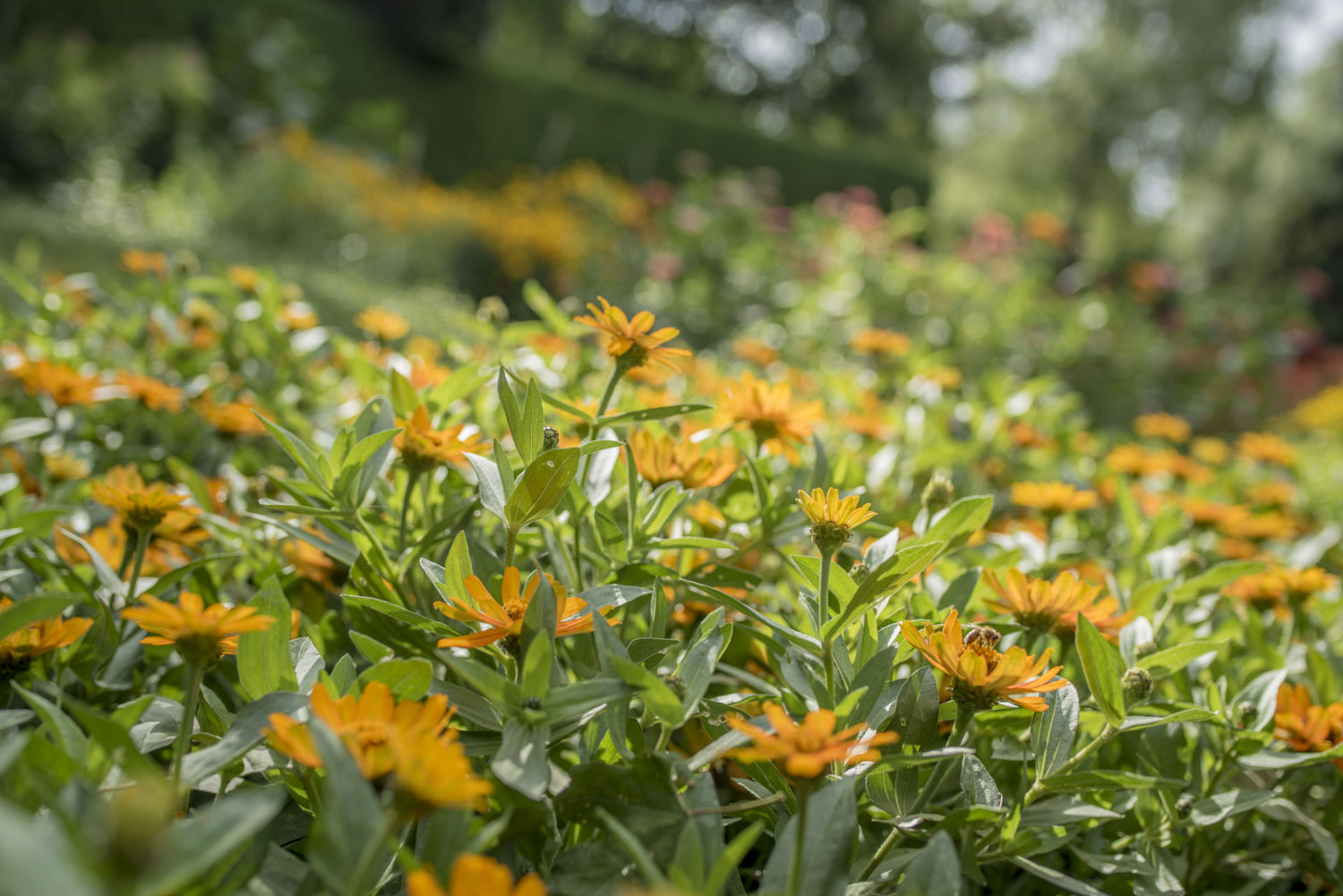The garden where we let nature do its work




There are no gardens in the list. Choose them in our catalogue.
There are no chosen events. Take a look to our calendar of events.



Both edible and ornamental plants far-flung corners of the Earth belonged to the garden in the past as they do today. For this we must be grateful to the aristocracy, who always yearned for exotic looking and tasty plants. They were used to decorate festive tables and dazzle noble visitors. In order to prevent the delicate plants from dying in the winter, greenhouses and orangeries were created, which in their beauty were reminiscent of opulent palaces.
Combining beauty, utility and technical innovation
To visit a greenhouse full of a palm-trees, banana plants, or prehistoric cycads is to enter another world. Sometimes it resembles a tropical jungle, other times it has the atmosphere of a story involving Hercule Poirot and a five o’clock tea. Owning foreign plants was once a matter of prestige. Among the aristocracy, citruses were especially popular from the 16th century onwards, the ‘golden apples’, which, according to the ancient legend, Hercules took away from the strictly guarded Gardens of the Hesperides. Charming orangeries were built especially for them. Later, with the development of transportation, when the lemons and oranges would not spoil on their way to the table, decorative palms, orchids and ferns, which were collected like art, porcelain, or stamps, replaced the citruses in greenhouses.
To create an environment for plants where they would not wither was a technical challenge. During the construction of a greenhouse, the builders had to solve the problem of maintaining a suitable climate behind the panes of glass, one which was often very different from that outside. And in times before electricity it was not easy. They were heated by stoves and through the distribution of hot water, air or other sophisticated systems which are not used today but are still widely preserved in tribute to our ancestors. An example of this is the orangery of the Chateau Hof, which underwent reconstruction in 2002.
Japanese beauties blooming in winter and dinosaurs of the plant kingdom
The Japanese camellia, which was named in honor of the botanist George Joseph Kamela who was born in Brno in 1661, is known as the sister of the tea plant. It is unique for when it flowers, which is not very usual in the plant world. It blooms in February. At this time it is possible to visit an exhibition of many of its species at the Chateau Lysice. In the greenhouse there, you can also see historical garden furniture, terracotta pots and tools, as well as the sliding roof of the local fig greenhouse which is technologically unique. It is also possible to see and buy camellias in Rájec nad Svitavou.
The largest water lily in the world, the Royal Victoria, was discovered by another Czech native Tadeus Haenke. Today, it is possible to see it together with a number of other edible and non-edible exotic plants at the Botanical Gardens of Masaryk University in Brno.
The greenhouse in Lednice is one of the most remarkable buildings of its kind. Its most precious exhibit is the 300-year-old palm-like cycad Ephalartos altensteinii, which is probably the most valuable greenhouse plant in the Czech Republic. As a member of the class Cycadopsida, it has longevity in its genes, as these plants are among the oldest living organisms in the world. They are not called living fossils or dinosaurs of the plant kingdom without reason.
During advent, an exhibition of gingerbread cottages is held every year in the orangery of the monastery in Zwettl, attracting both children and sweet-toothed adults alike. It serves as proof that the world of orangeries and winter gardens is not losing its appeal, even when nature outdoors is sleeping and flowerbeds and lawns are covered with a blanket of snow.


The garden where we let nature do its work
The House of Liechtenstein – an aristocratic family from Central Europe
Adventure in the Garden: When Children Bloom!
Art in the garden
Water in the garden - ornament and brilliant technical work
Greenhouses and Orangeries: Exotic Paradises within Reach
Places of peace and inspiration
Rarities in the fruit and vegetable garden
A natural pharmacy in the garden
The Story of the Garden
Herbs: Pleasure and Profit from the Garden
Where the grapevine flourishes, so do people



58 Parks & Gardens